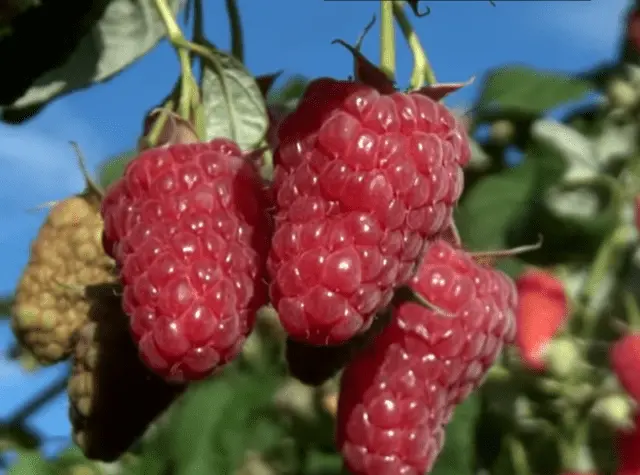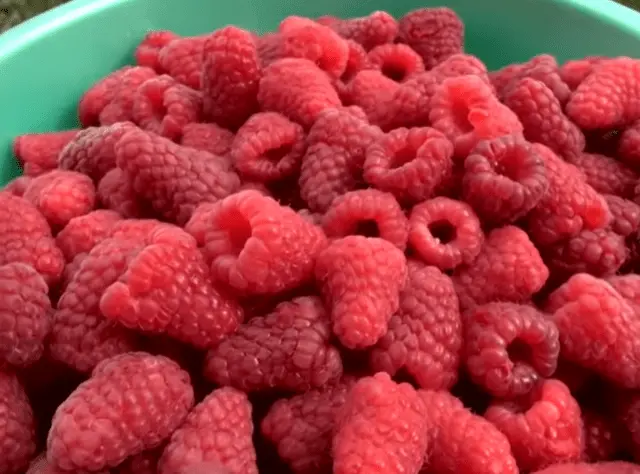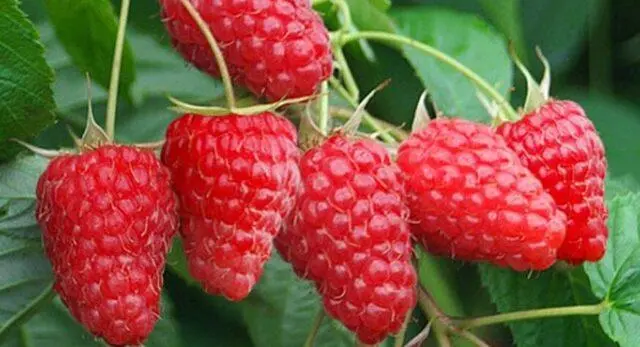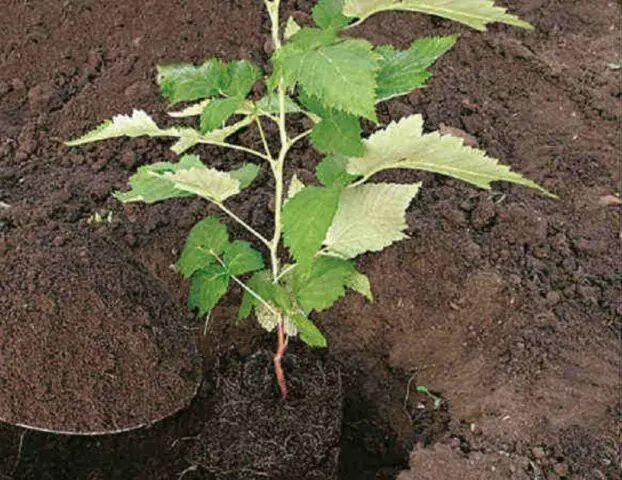Contents
Raspberry Vasena is the result of many years of work of breeders, it has recently appeared on sale, therefore it has not yet become widespread. The unique variety compares favorably with the previously created remontant hybrids by the resistance of the stems to lodging and the taste of berries.
Inference history
The right holder of the variety is the NPO Gardens of Our Country, the originators are a group of breeders led by A. Sidelnikov. The remontant raspberry Vasena was created by natural selection at the station experimental plots of Chelyabinsk (2000).
Strong plants with large fruits, resistant to weather changes, were selected for further reproduction. Only in 2018, the Vasena raspberry was included in the State Register with a recommendation for cultivation in the Ural and Siberian regions. In 2019, he was awarded a gold medal at the prestigious international exhibition “Flowers Expo”.
Description of Vasena raspberry variety
A variety of remontant type with long fruiting, ripening takes place in several stages. The mass of berries from the first to the last wave remains unchanged.
Berries
All remontant varieties are fruitful, Vasena’s raspberry is no exception. The taste qualities are not inferior to the sweetest dessert representatives, and the aroma is not inferior to the wild species.
Raspberry is large-fruited, with abundant flowering, all ovaries are viable, not prone to drying out and falling off
Description:
- Berries are cone-shaped with a narrowed end, all of the same weight – 12-15 g.

- Surface with a glossy sheen, drupes are dense, raspberries are bright burgundy.
- The pulp is not watery, tender texture, juicy, with numerous small seeds.

The berries of the Vasena variety are tightly fixed on the stalk, do not crumble, the separation is dry
Bush
Raspberry is tall, dense bush, densely leafy, sprawling. Laterals (brushes) are formed from leaf axils of perennial and current season shoots.
Description of raspberry Vasena:
- The density of the bush is 7-8 stems. The shoots of the current year are dark olive in color, the structure is flexible at the beginning of growth, by the end of flowering it becomes dense, stiff.
- Perennial shoots are erect, dark brown, up to 2-2,2 m high. The branches are stable, with drooping tops, do not lie down under the weight of berries. Raspberry Vasena does not require a garter to a support.
- Racemes are long, cluster-shaped, with numerous ovaries, remontant zone within 1,5 m.
- Raspberry with long leaves, curved, corrugated, dark green in the upper part, silvery below, finely pubescent.
- Leaf plates of lanceolate type, serrated along the edge, alternate arrangement.
- The flowers are small, dark beige. Raspberries are self-pollinating, each bud gives a full-fledged ovary.
- The root system is powerful, mixed type, branched, gives growth, which is enough for further reproduction.

Raspberry Vasena does not have thorns on young shoots, on perennial stems they are present in the form of rudiments
Characterization
The variety was created for cultivation in a temperate continental climate. In the process of natural selection, Vasena’s raspberry turned out to be stress-resistant, with good resistance to infections, stable and long-term fruiting.
Ripening time and yield of Vasena raspberries
The variety is medium early, blooms in the second half of May. The first wave of berries reaches biological ripeness in late July – early August. Raspberries bear fruit until frost, for the regions of the Urals – these are the last days of September or the first decade of October.
Vasena has a good indicator of fruiting, 5-6 kg are harvested from one bush. Shelf life – no more than 24 hours, then the raspberries lose their juice and shape.

Berries are picked in dry weather, there should be no dew or raindrops on the surface
Frost resistance
In addition to taste, the ability to withstand low temperatures was a priority for breeders. Vasena quietly winters in Siberia, the Far East, the Urals. Thanks to a powerful root system, raspberries can withstand up to – 27 0C. In case of damage, forms a replacement. The above-ground part is not terrible and lower rates.
Resistance to diseases
Raspberry Vasena is resistant to major crop diseases. Under favorable growing conditions, it is practically not susceptible to septoria, purple spotting, anthracnose.
In hot weather with high humidity, gray rot is possible.
Only the raspberry beetle parasitizes on the variety. Weevil, stem fly, glass-box do not cause damage to Vasena.
Pros and cons of the variety
Variety Vasena fell in love with many gardeners. It is valued for stable fruiting, dessert taste.

The berries are not prone to shedding, they remain marketable on the bush for several days
Raspberries have the following positive qualities:
- the stems do not droop, no support is needed;
- long, high, stable fruiting;
- frost resistance;
- resistance to fungal, viral and bacterial infections;
- sweet taste, the concentration of sugars does not decrease in autumn or cold rainy season;
- bears fruit from the first year of planting, later forms clusters on annual and old shoots;
- basal shoots are formed in moderation, which facilitates care.
The disadvantages of the Vasena variety include a short shelf life, impossible transportation over long distances and poor drought resistance.
Features of growing raspberry Vasena
Planting a variety in the Central or Middle lane is possible at the beginning of the season (April) or in autumn, three weeks before frost. In the latter case, the plant must be insulated. In the temperate continental climate of Siberia and the Urals, Vasena’s raspberry is not suitable for autumn planting, the plant will not overwinter. A seedling is determined for a plot in the spring, when the soil warms up to +6 0C. The site is drained, with light, fertile soil on the south or southeast side.
Planting raspberry Vasena
For propagation of the variety, an annual seedling is taken:
- They dig up the site, remove plant debris, add organic matter.
- They dig a hole 15 cm deeper than the root system, with a diameter of 50 cm.
- The bottom is covered with a mixture of peat, organic matter and wood ash.
- The seedling is placed in the center, the pit is filled up, the soil is compacted.
- Watered with a solution of “Energen”.

If there are several seedlings, they are placed in a checkerboard pattern, leaving an interval of 1,5 m between the holes.
Raspberry Care Vasena
With proper care, raspberries will delight the harvest for many years. Agricultural technology varieties:
- Loosening, removing weeds, mulching.
- Soil moistening: the root circle should not dry out, but they also do not allow moisture to stagnate, since there is a threat of root rotting.
- In autumn, water-charging irrigation is carried out.
- Raspberries develop well and bear fruit, provided that fertilizing is applied. Nitrogen-containing products are used immediately after the start of sap flow. Superphosphate is needed during the flowering period. Potassium is added during the period of berry setting. Give organic matter in the fall.
At the end of the season, stems that are more than two years old are cut off; shoots damaged by frost are removed in the spring. The bush is spudded and mulched.
Prevention of diseases and pests
To exclude the development of a fungal infection, soil moisture is maintained at normal levels, plant residues are removed. Before blooming the leaves, Vasena and the soil around it are treated with Topaz. When raspberry buds appear, Energen is used, colloidal sulfur is used at the time of fruit set.
To prevent the appearance of a raspberry beetle on a plant, ash is added to the soil with each loosening. Before opening the buds, spray “Iskra DE”. In autumn, after harvesting, Vasena’s raspberries and the soil around it are to be treated with Karbofos.
Conclusion
Raspberry Vasena is a remontant variety of medium ripening. The bush is tall, with stable stems, not prone to lodging. The variety is frost-resistant, with long fruiting. Berries are consumed fresh, they are suitable for all types of processing.









